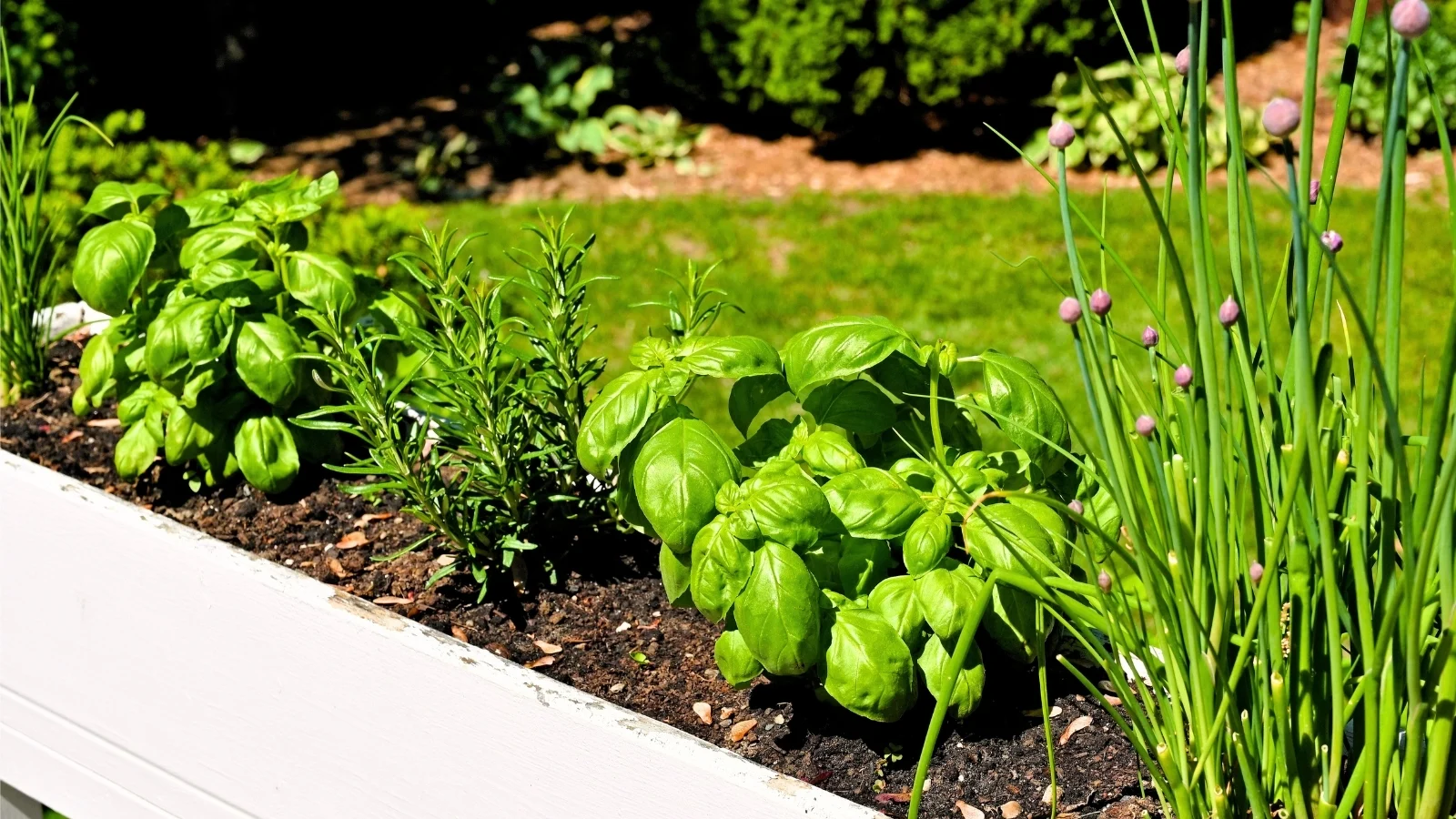Basil and rosemary bring the fresh, herby flavor of summer. They also add a wonderful aroma to the garden and carry beneficial qualities for surrounding plants. But while they pair together in the kitchen, they aren’t a set match in the landscape. Gardening expert Katherine Rowe explores growing the duo together and their better pairings.
Rosemary and basil create a delicious combination in Herbes de Provence, with their bright, savory flavors capturing the essence of summer. But do they grow well side by side in the garden? Not exactly. While they share some basic growing needs, others don’t quite match up. There are better plant companions for both, whether in a garden bed or a container.
Sure, rosemary and basil can grow in the same area, but giving them space to accommodate their different preferences and growth habits is a smart move. From a companion planting perspective, pairing rosemary with basil doesn’t offer clear benefits for either. They’re fantastic together in the kitchen, but in the garden, it’s best to give them some room so each can thrive.
Planting Basil With Rosemary

Both herbs share some growing preferences. They love warmth and need full sun (at least six hours of direct sunlight daily) for the strongest growth. Basil can handle a bit of shade, but rosemary—hailing from the sunny Mediterranean—craves as much sun as possible. Basil’s tender leaves might scorch under intense afternoon rays, so in hot southern climates, a little afternoon shade can help.
Well-draining soil is a must for both, and good airflow helps prevent fungal diseases that come with overcrowding. Basil is prone to downy mildew, rosemary to powdery mildew, and both can fall victim to botrytis (gray mold) in damp, humid conditions. Waterlogged soil can also lead to root rot in either plant.
The Key Differences in Growing Conditions
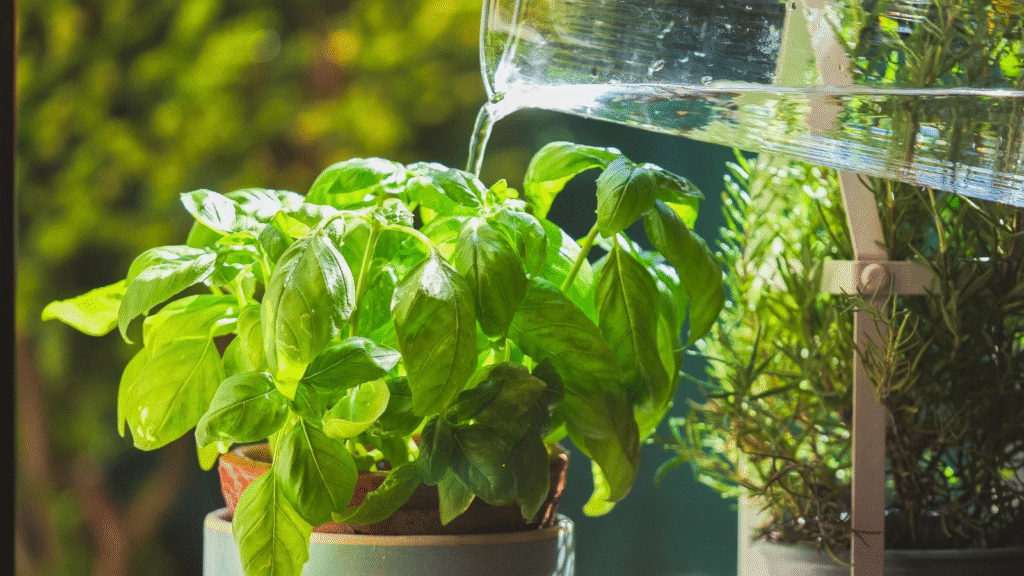
The biggest difference between basil and rosemary comes down to water and soil moisture. Basil needs consistent watering to keep the soil evenly moist, while rosemary prefers dry conditions and rarely needs extra irrigation.
Rosemary is drought-resistant, adapted to hot, dry summers and cool, wet winters. Basil, likely originating from Southeast Asia and subtropical Africa, requires more water to fuel its annual growth.
Another difference is soil fertility. Neither is a heavy feeder, but basil does best in organically rich soil. A bit of fertilizer at planting and again mid-season helps it flourish through summer. Rosemary, on the other hand, thrives in leaner, sandier soil. It can handle some compost but doesn’t need extra fertilizer.
Growth Habits
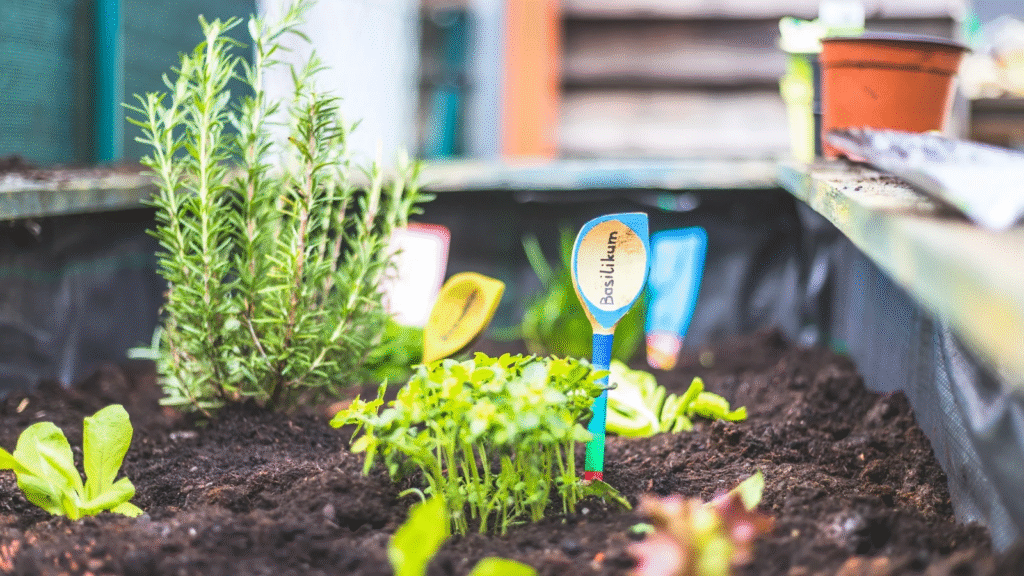
Outside of zone 10, basil (Ocimum basilicum) grows as an annual. It can be kept indoors year-round, but it eventually declines—starting fresh in spring ensures tender new growth. Rosemary (Salvia rosmarinus) is a perennial in zones 8-11, with hardier varieties (‘Arp’ and ‘Madelene Hill’) surviving down to zone 6 with protection. Indoors, rosemary often struggles with pests like spider mites.
Rosemary grows into a small shrub, with woody stems and deep roots that take up more space than basil. Basil forms a bushy, compact plant but stays smaller and lower than rosemary. In tight quarters, rosemary can overshadow basil, competing for sunlight, water, and nutrients.
Growing Them in the Ground
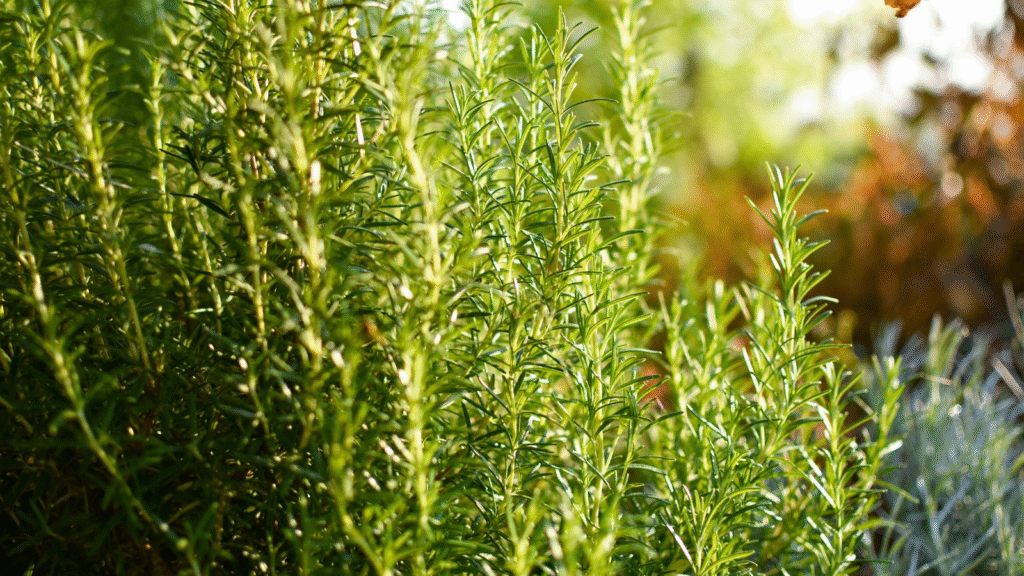
If planting both in the same garden bed, leave some space between them to meet their different soil needs. Keep rosemary and basil a few rows apart to tailor care—water and fertilize the basil but skip these for rosemary.
Raised Beds and Containers
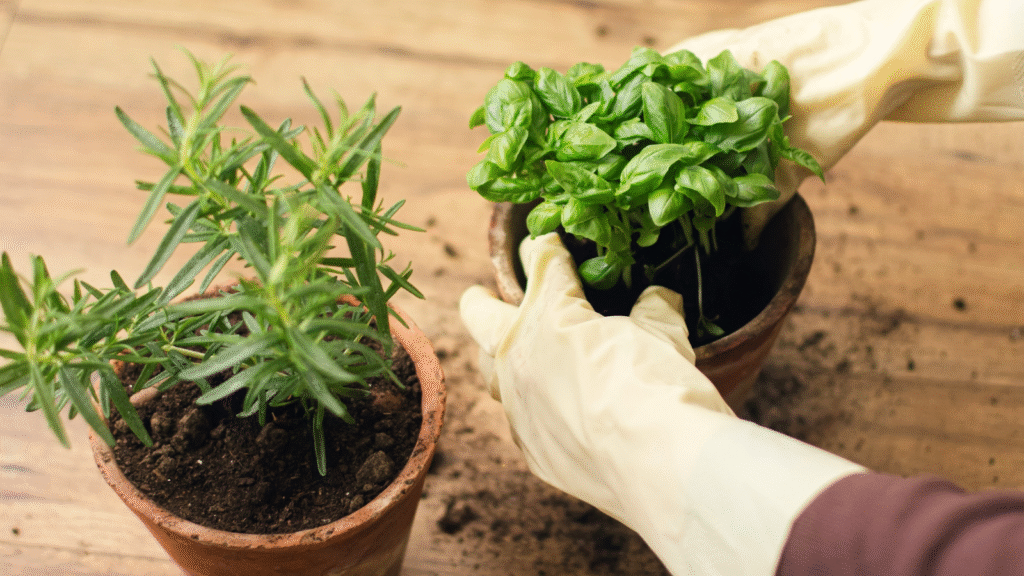
Rosemary does well in its own pot or alongside other drought-tolerant herbs like lavender and thyme. Just make sure the container is big enough for mature growth. Larger pots with well-draining soil mean less frequent watering (though don’t let them dry out completely).
Basil pairs better with plants that need regular moisture, like edible flowers (calendula, for example). Both herbs work beautifully in ornamental and edible gardens, adding charm to borders and decorative planters.
In raised beds, place rosemary at the edge where it won’t get extra water or fertilizer. The north side keeps it from shading smaller plants; on the south side, it can protect tender greens from harsh sun.
Companion Planting Basics
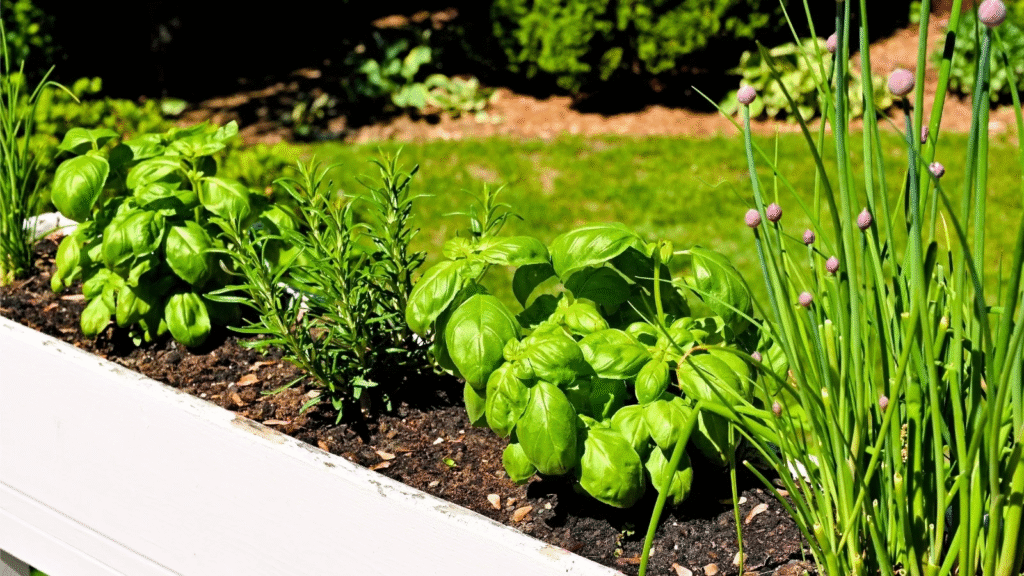
Companion planting means grouping plants in ways that benefit one or both—saving space, deterring pests, or improving growth. Some plants repel pests with their scent, mask vulnerable plants, or attract beneficial insects. Others have staggered growing seasons, like radishes and carrots—the radishes are harvested just as carrots take off, loosening the soil in the process.
Some pairings provide shade (like tomatoes sheltering lettuce) or have complementary root systems that avoid competition. Certain plants even enhance each other’s flavor through natural compounds in their leaves and roots.
Better Plant Partners
Rosemary and basil actually make great companions for other crops. Their fragrant oils repel pests (including mosquitoes—great near seating areas!).
Good Rosemary Companions
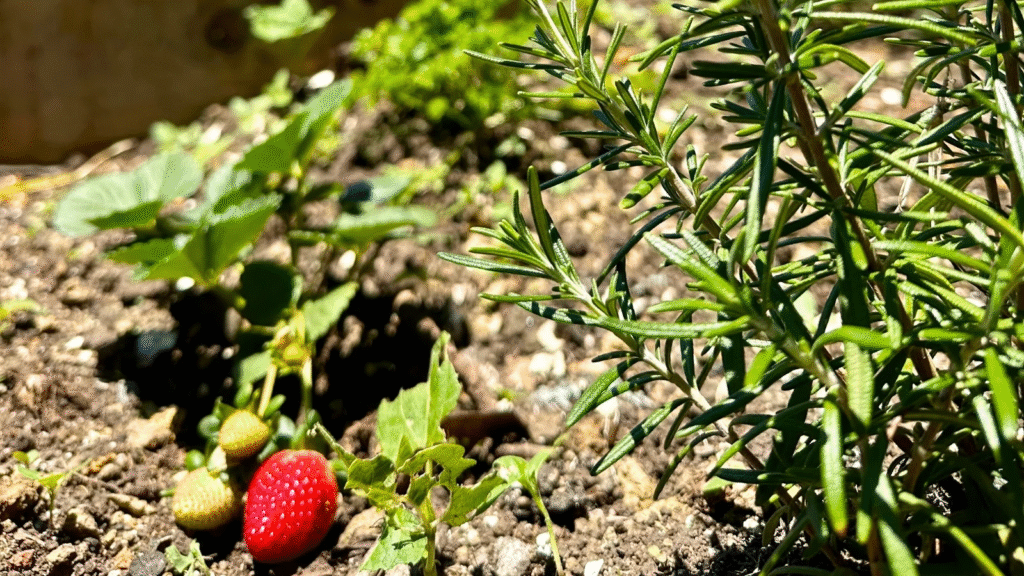
Rosemary thrives alongside other Mediterranean herbs (sage, lavender, thyme) that love sun and dry soil. Other great pairings include:
- Broccoli
- Cabbage
- Carrots
- Marigolds
- Onions
- Strawberries
Rosemary boosts strawberries’ sweetness and may deter slugs. Since strawberries sprawl low, they don’t compete for space. With carrots, rosemary helps repel carrot rust flies—just plant carrots nearby but not in the same heavily watered spot.
For cabbage and broccoli, rosemary’s strong scent confuses pests like cabbage moths, masking the plants they’d normally attack.
Good Basil Companions
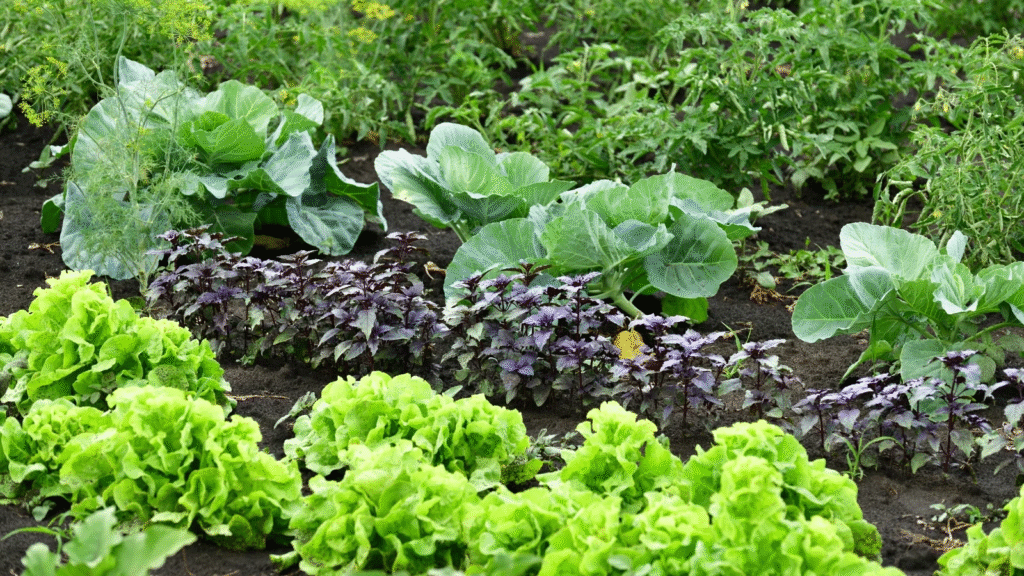
Basil can act as a “canary in the coal mine,” showing signs of disease (like wilt or mildew) before other plants do. Pair it with crops that enjoy similar moisture and sun, such as:
- Asparagus
- Chamomile
- Chives
- Garlic
- Lettuce
- Oregano
- Parsley
- Tomatoes
Basil and tomatoes are a classic duo—not just in recipes but in the garden, where basil may even improve tomato growth. Add African marigolds to the mix, and you’ll likely see fewer thrips.

